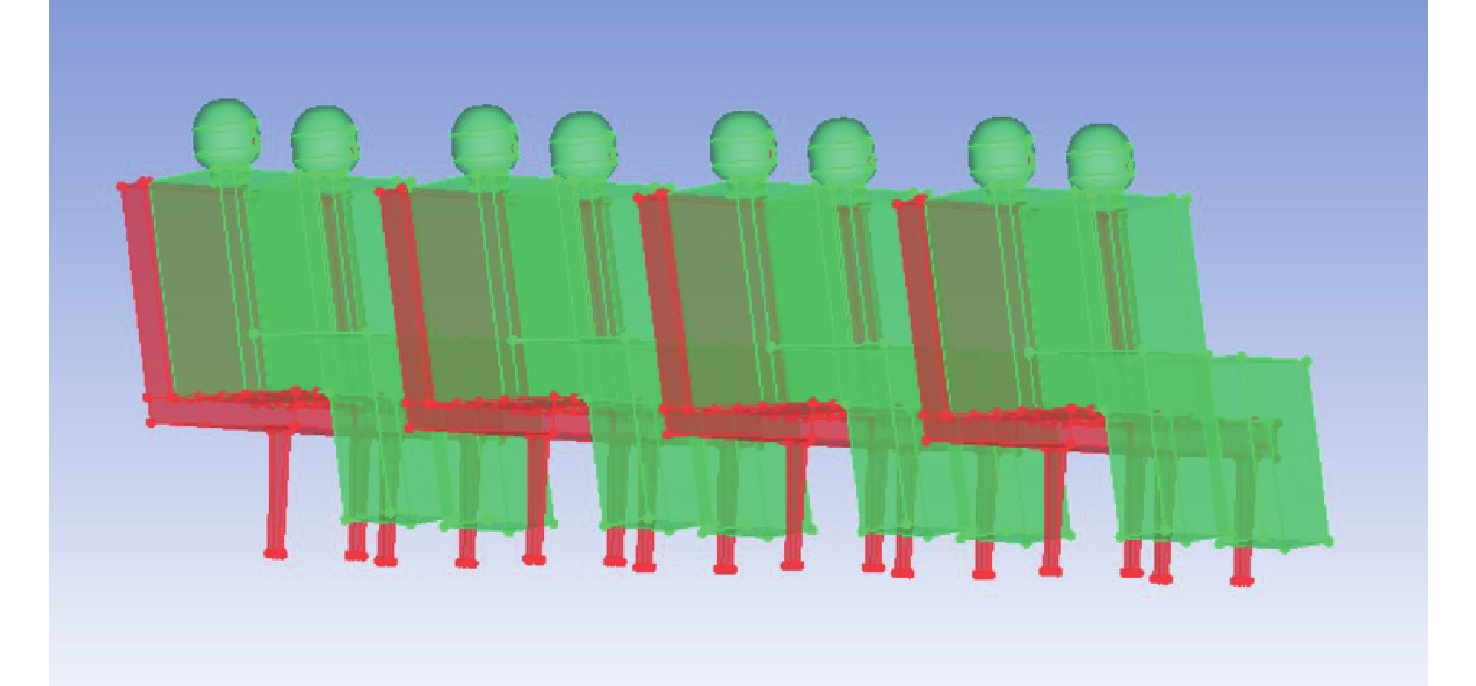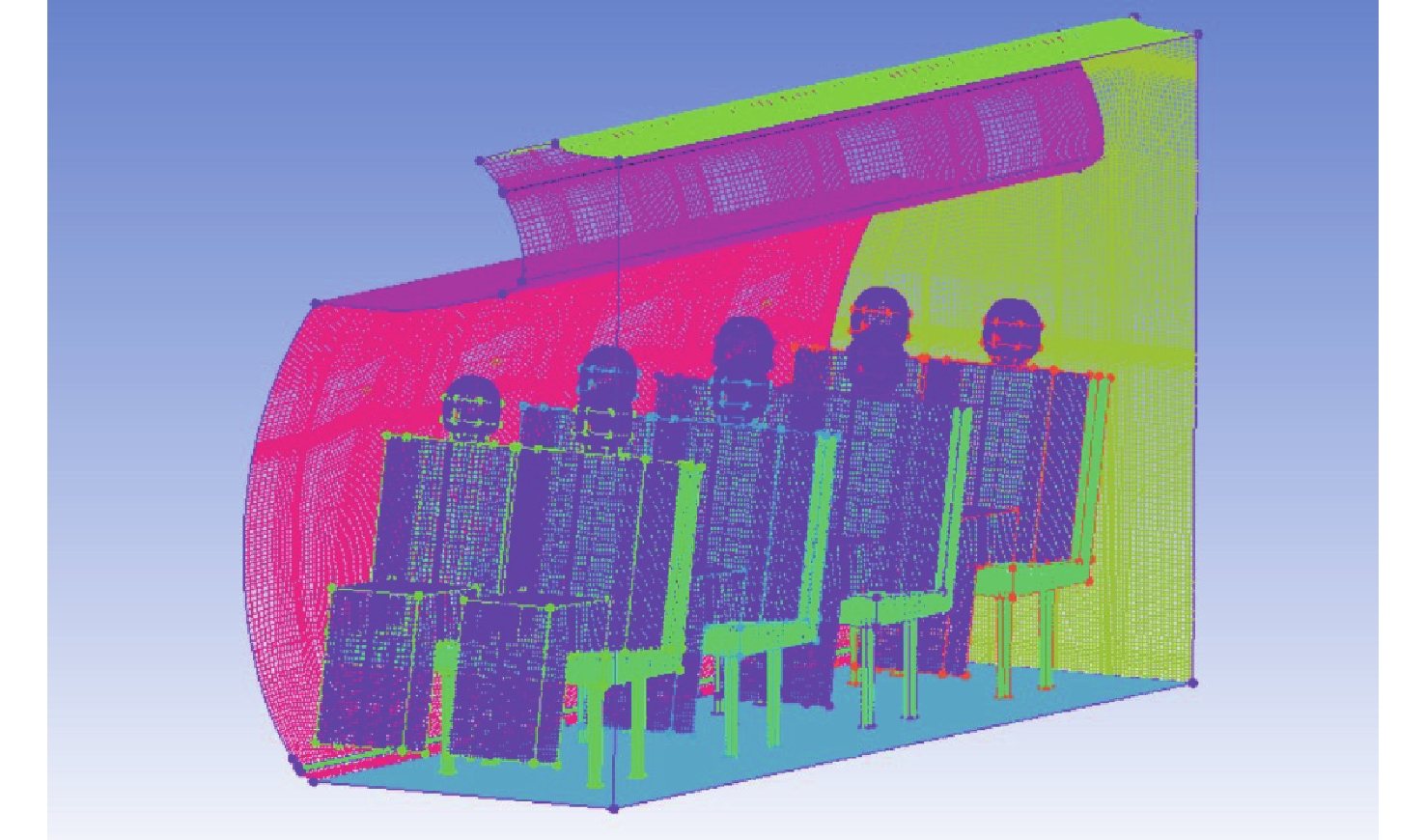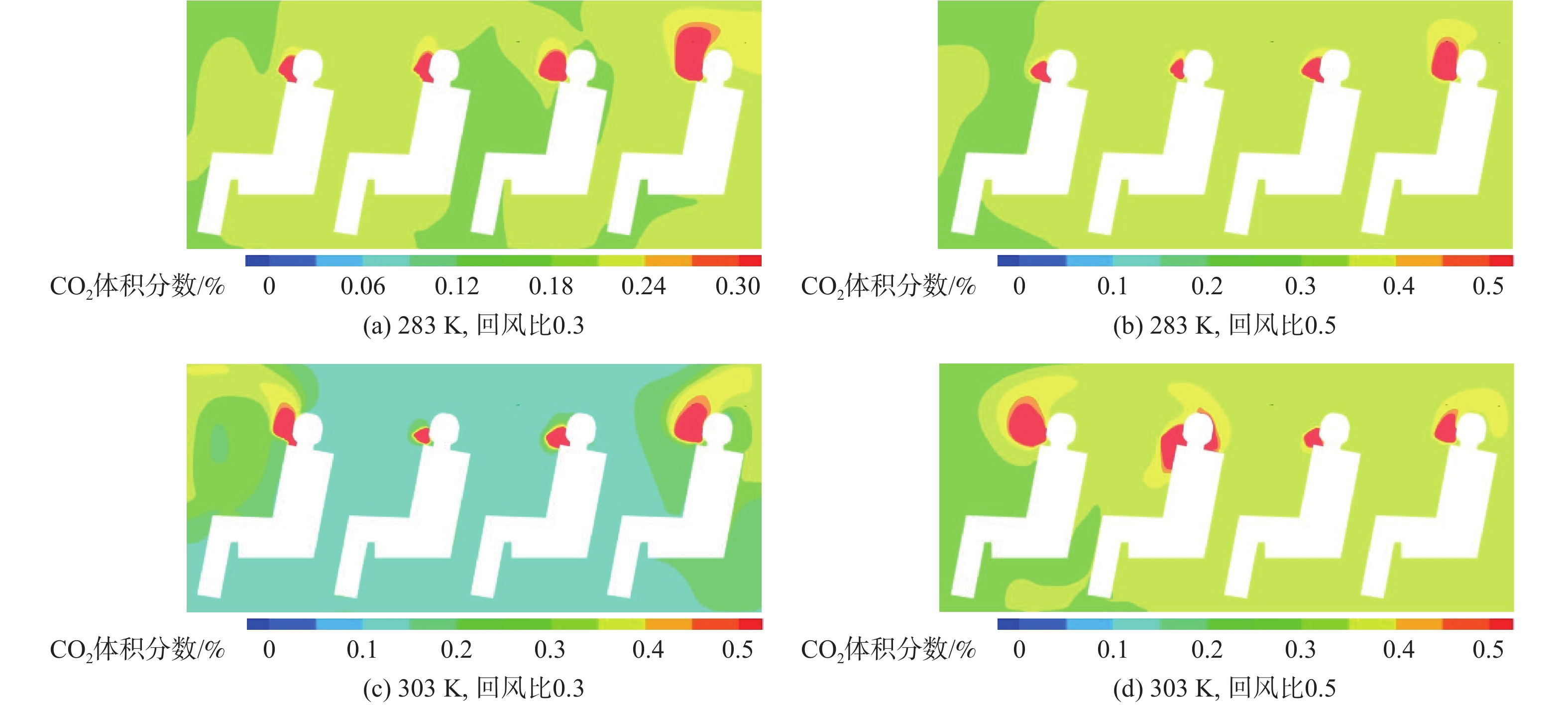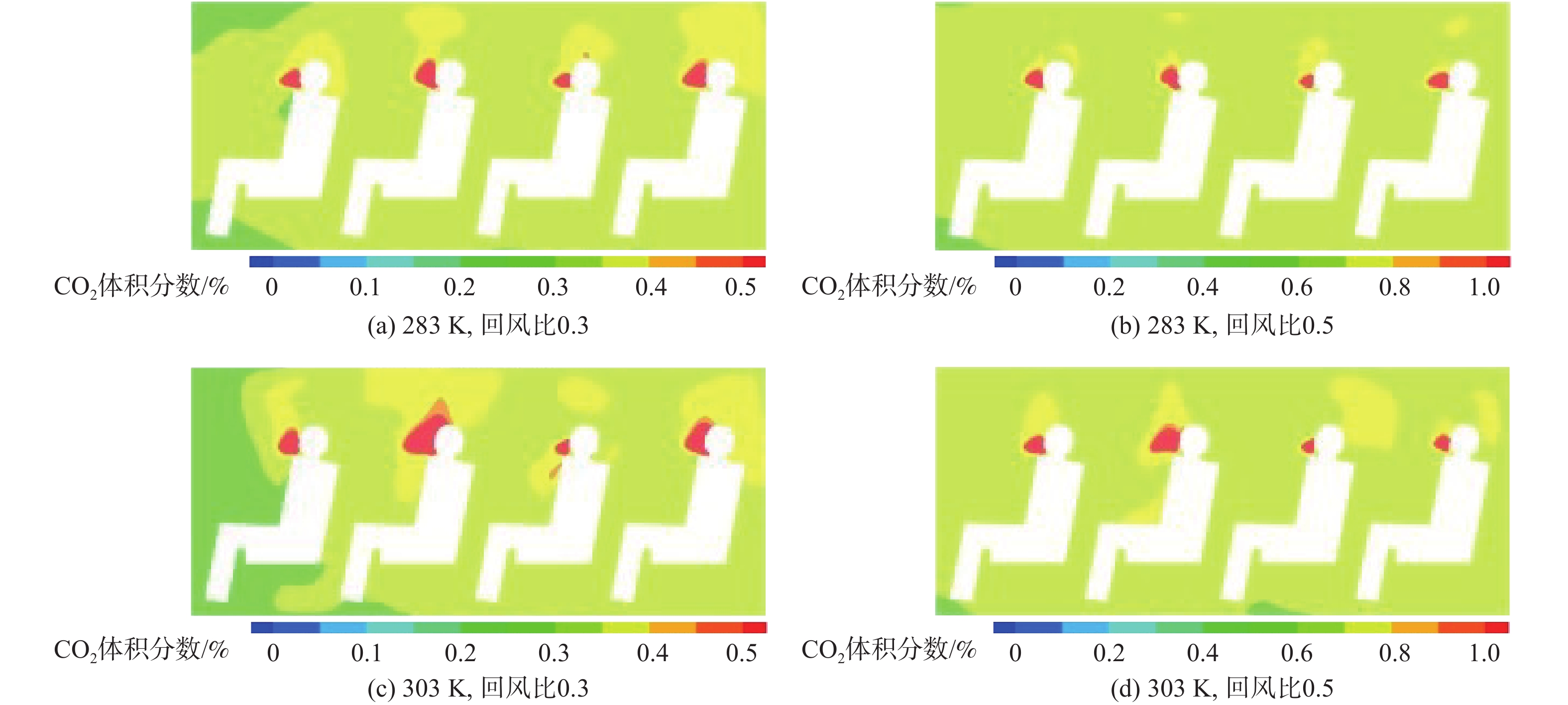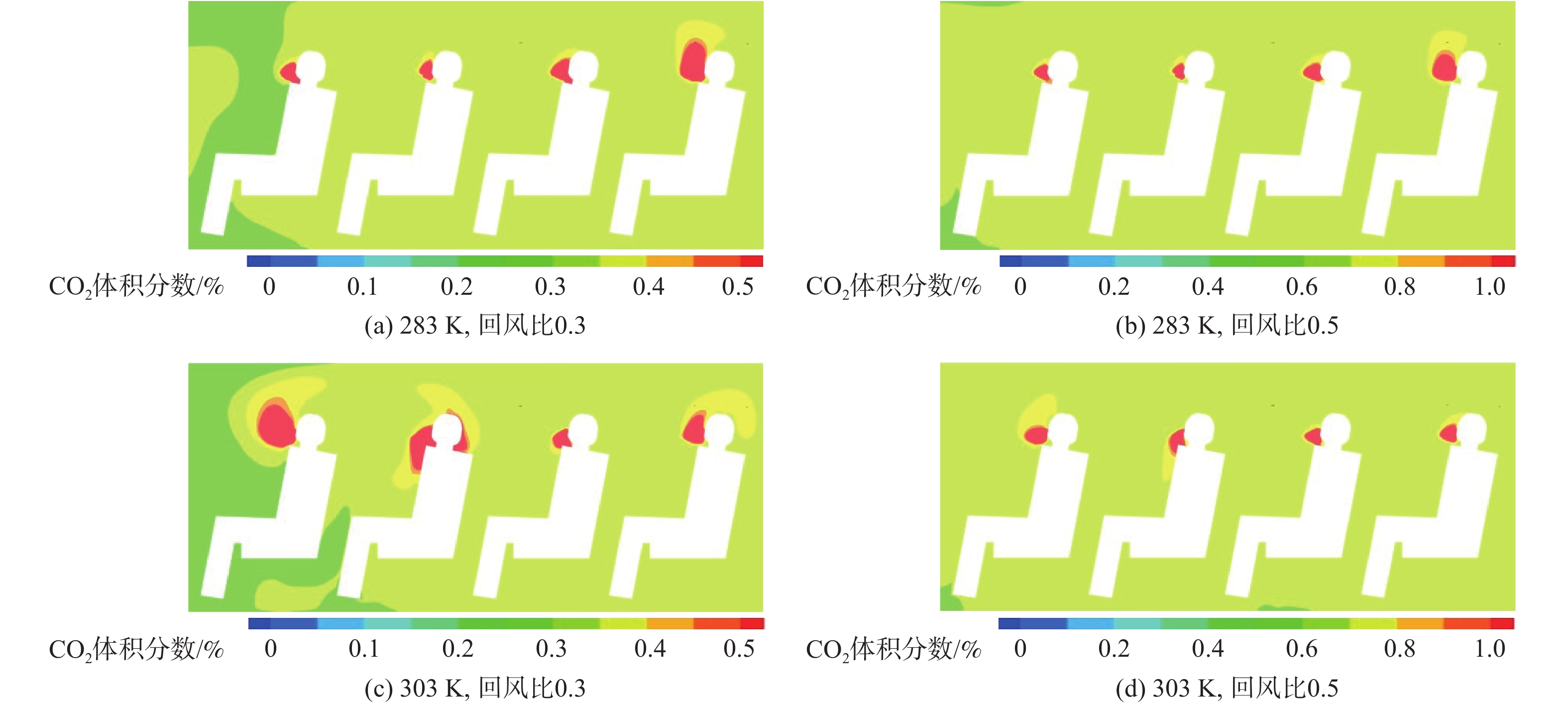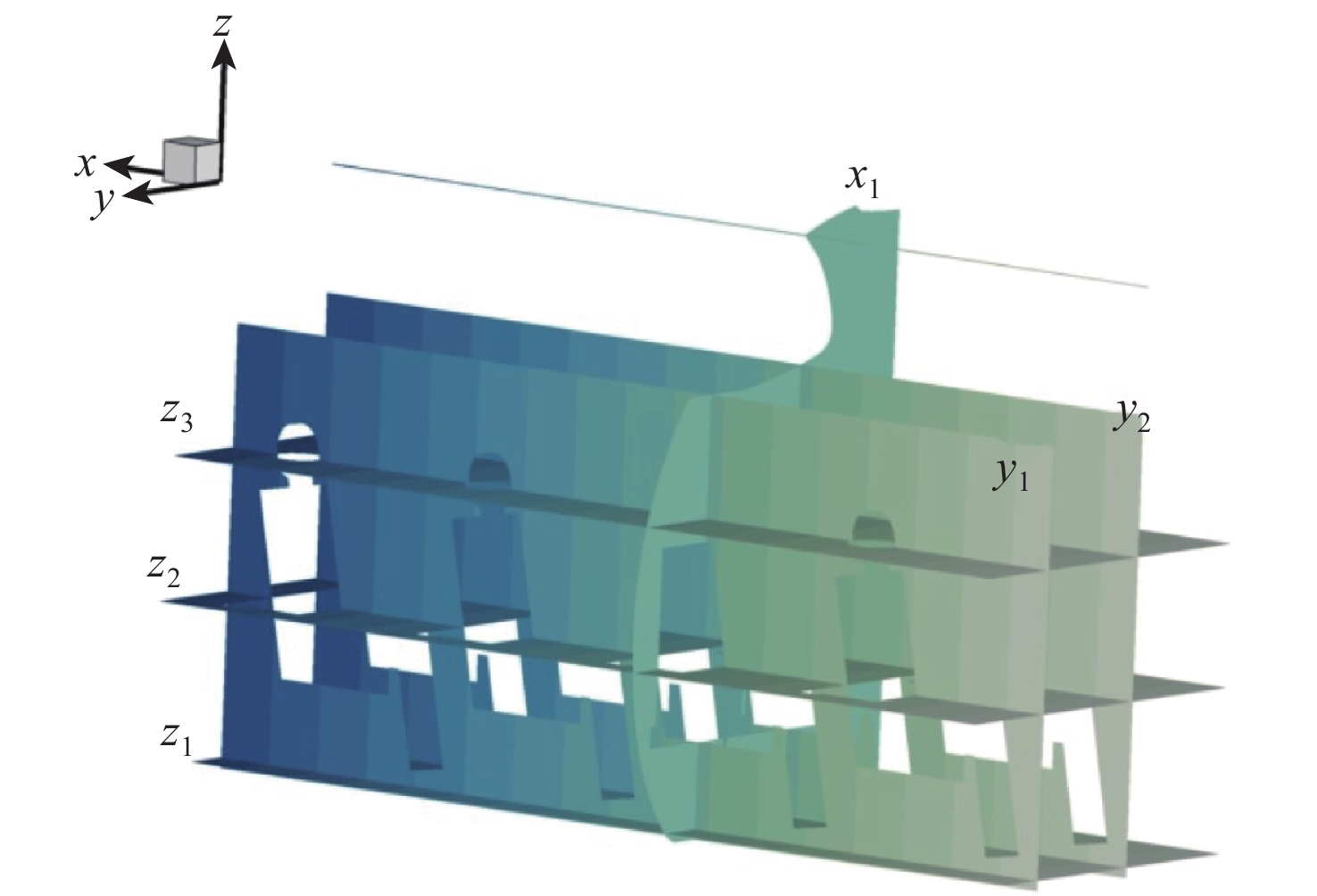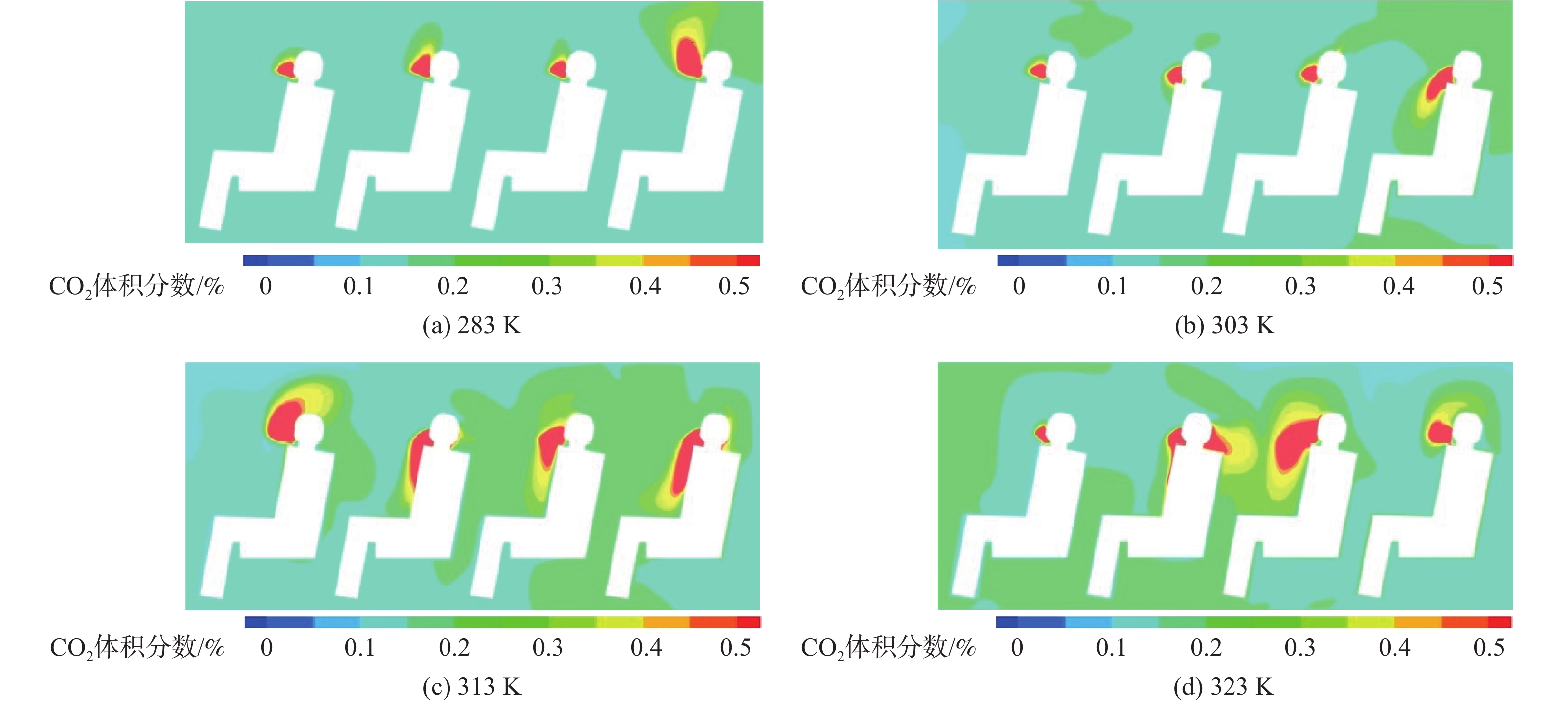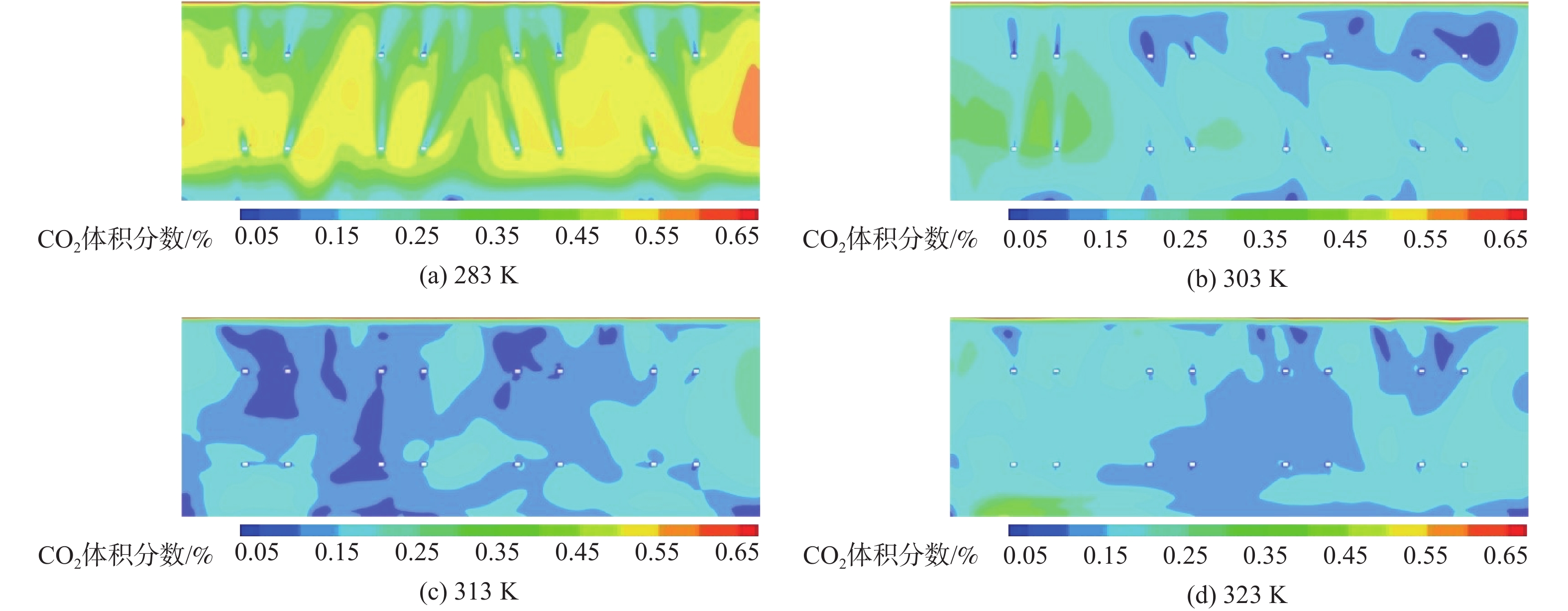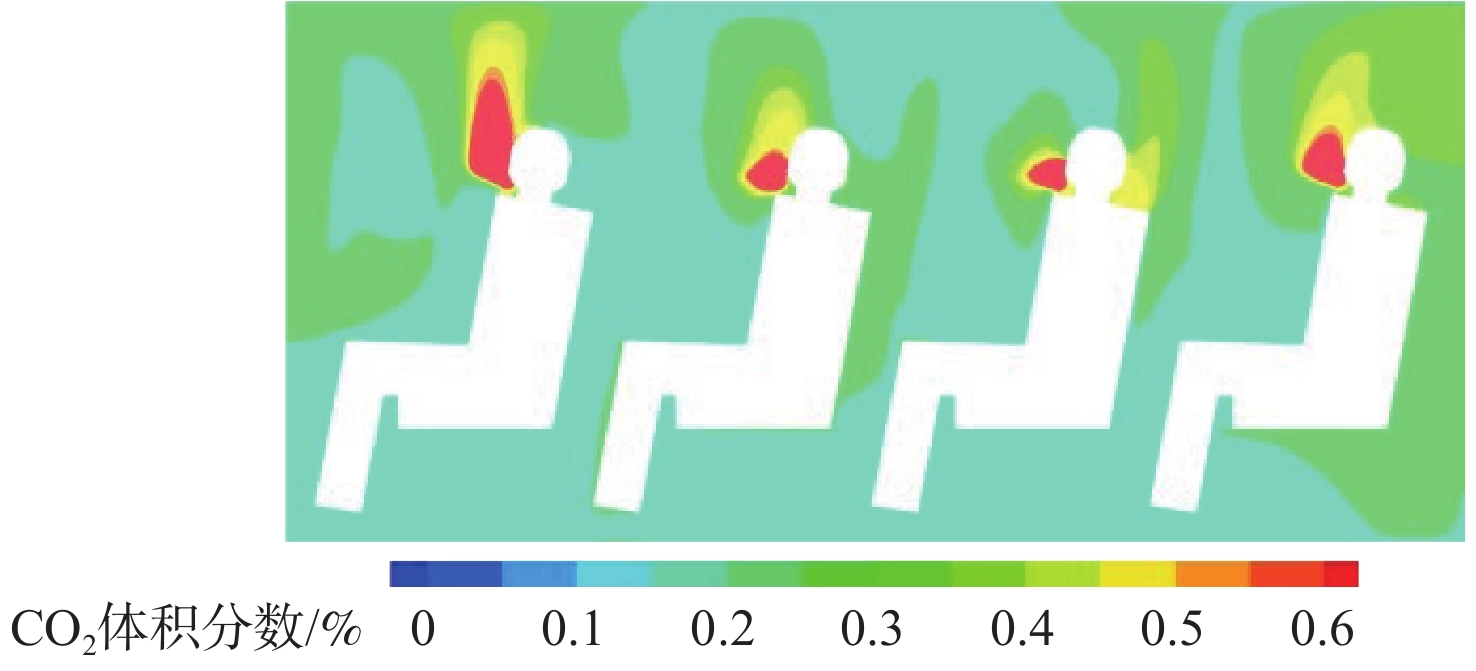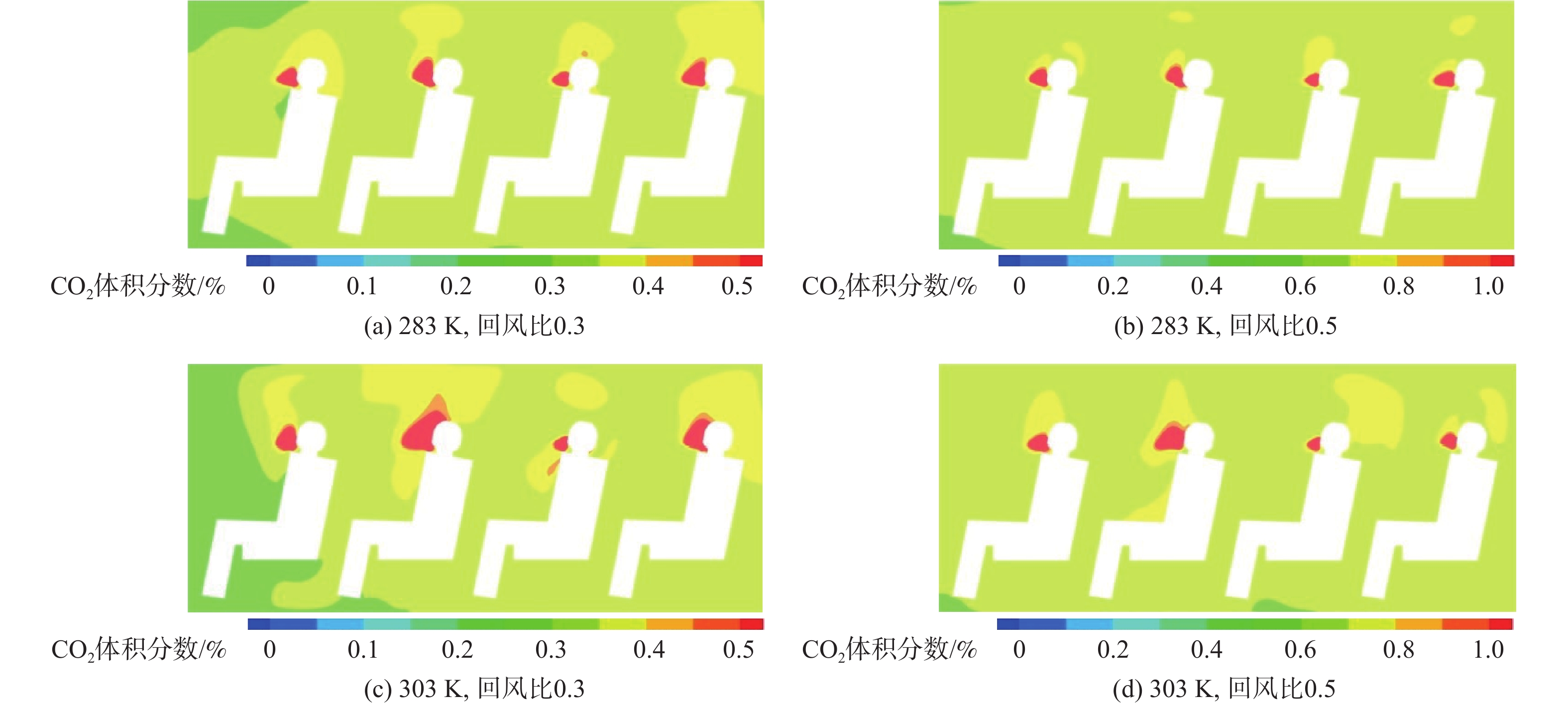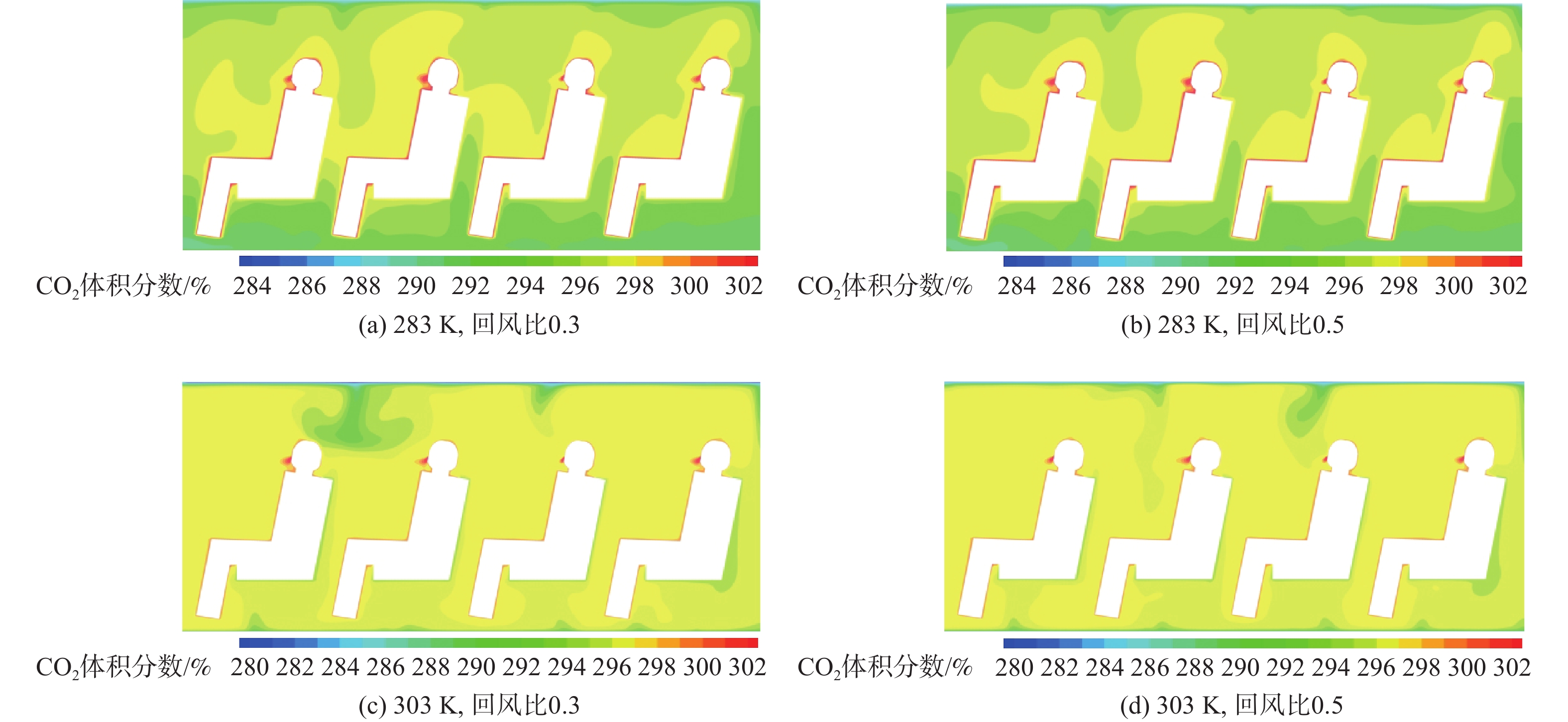-
摘要:
为保证乘客舒适环境与电子设备等正常工作,采用计算流体力学(CFD)方法,对民用飞机座舱内流场进行模拟,通过改变回风和新风温度、巡航高度及回风比,得到不同工况下舱内CO2体积分数、温度场及速度场分布,并与已有数据对比,验证了计算模型的正确性。研究结果显示:地面标准天及巡航状态舱内流场基本符合要求,冬天供风50 ℃及回风比0.5时,舱内部分区域温度较高,且CO2体积分数升高并接近标准值,可根据实际需要确定环控系统方案。
Abstract:The interior of civil aircraft cockpit is relatively closed, the air circulation is not smooth, the personnel density is large, and there are organic heat sources such as personnel and electronic equipment. It is essential to have a firm grasp of the flight envelope’s CO2 concentration, temperature distribution, and air velocity in order to certify civil aircraft as airworthy. The research introduced in this paper uses the computational fluid dynamics (CFD) method to simulate the flow field in the civil aircraft cockpit. The distribution of CO2 concentration, temperature field, and velocity field in the cockpit under various operating conditions is determined by varying the return air and fresh air temperatures, cruise altitude, and return air ratio. Compared with the existing literature data, the correctness of the calculation model is verified. The research results show that the flow field in the cabin in the ground standard day and cruise state basically meets the requirements. When the air supply is 50 ℃ and the return air ratio is 0.5 in winter, the temperature in some areas of the cabin is higher, and the CO2 concentration increases and approaches the standard value. The environmental control system scheme can be determined according to the actual needs.
-
-
[1] LI M X, ZHAO B, TU J Y, et al. Study on the carbon dioxide lockup phenomenon in aircraft cabin by computational fluid dynamics[J]. Building Simulation, 2015, 8(4): 431-441. doi: 10.1007/s12273-015-0217-8 [2] 崔燚. 座舱高密度群体环境中病毒传播的数值分析[J]. 科技信息, 2013(6): 46,48. doi: 10.3969/j.issn.1001-9960.2013.06.038CUI Y. Numerical analysis of virus transmission in high-density crowd environment in cockpit[J]. Science & Technology Information, 2013(6): 46,48(in Chinese). doi: 10.3969/j.issn.1001-9960.2013.06.038 [3] 张英杰. 狭小空间内温度和二氧化碳对人体舒适性影响实验研究[D]. 重庆: 重庆大学, 2018.ZHANG Y J. The experimental research into the influence of temperature and carbon dioxide to human comfort in small space[D]. Chongqing: Chongqing University, 2018(in Chinese). [4] 周琼瑶. 飞机座舱非均匀环境人体热舒适研究[D]. 南京: 南京航空航天大学, 2019.ZHOU Q Y. Research on thermal comfort for non-uniform environment in aircraft cabin[D]. Nanjing: Nanjing University of Aeronautics and Astronautics, 2019(in Chinese). [5] MAZUMDAR S, CHEN Q. A one-dimensional analytical model for airborne contaminant transport in airliner cabins[J]. Indoor Air, 2009, 19(1): 3-13. doi: 10.1111/j.1600-0668.2008.00553.x [6] ABOOSAIDI F, WARFIELD M J, CHOUDHURY D. Numerical analysis of airflow in aircraft cabins[C]//International Conference On Environmental Systems. Warrendale: SAE International, 1991: 709-721. [7] 代炳荣, 刘义国, 余刚, 等. 飞机座舱空气质量数值模拟研究[J]. 交通运输工程学报, 2016, 16(3): 108-115. doi: 10.3969/j.issn.1671-1637.2016.03.013DAI B R, LIU Y G, YU G, et al. Numerical simulation research on air quality of aircraft cabin[J]. Journal of Traffic and Transportation Engineering, 2016, 16(3): 108-115(in Chinese). doi: 10.3969/j.issn.1671-1637.2016.03.013 [8] 黄彦祺. 飞机座舱内流场的数值模拟研究[D]. 重庆: 重庆大学, 2013.HUANG Y Q. Study on numerical simulation of air-flow based on aircraft cabin[D]. Chongqing: Chongqing University, 2013(in Chinese). [9] 陆月星, 李洪淼. 飞机座舱散热的数值模拟研究[C]//第十一届全国流体力学学术会议. 北京: 中国力学学会, 2020: 957.LU Y X, LI H M. Research on numerical simulation of aircraft cabin heat dissipation [C]//Summary of the 11th National Symposium on Fluid Mechanics, Professional Committee of Fluid Mechanics, Chinese Society of Mechanics. Beijing: The Chinese Society of Theoretical and Applied Mechanics, 2020:957(in Chinese). [10] 王乔蓬. 民航客机座舱内气流组织的数值模拟与结构优化研究[D]. 长沙: 长沙理工大学, 2019.WANG Q P. Numerical simulation of air distribution and structure optimization in civil aircraft cabin[D]. Changsha: Changsha University of Science & Technology, 2019(in Chinese). [11] 卢国栋. 大型客机座舱送风方式研究[J]. 科技创新导报, 2018, 15(9): 9-12. doi: 10.16660/j.cnki.1674-098X.2018.09.009LU G D. Study on air supply mode in cockpit of large passenger aircraft[J]. Science and Technology Innovation Herald, 2018, 15(9): 9-12(in Chinese). doi: 10.16660/j.cnki.1674-098X.2018.09.009 [12] 卢国栋. 送风方式对座舱环境的影响[D]. 南京: 南京航空航天大学, 2016.LU G D. The influence of air supply mode on the cabin environment[D]. Nanjing: Nanjing University of Aeronautics and Astronautics, 2016(in Chinese). [13] 陈希远, 于天鹏, 欧阳建亮, 等. 考虑再循环风的飞机座舱引气污染仿真研究[J]. 科学技术与工程, 2017, 17(19): 295-300. doi: 10.3969/j.issn.1671-1815.2017.19.054CHEN X Y, YU T P, OUYANG J L, et al. A study of bleed air contaminant in aircraft based on recirculation air[J]. Science Technology and Engineering, 2017, 17(19): 295-300(in Chinese). doi: 10.3969/j.issn.1671-1815.2017.19.054 [14] 杨林谦, 魏雅川, 宋国磊等. 湍流模型的选择与评价[C]//中国航天电子技术研究院科学技术委员会2020年学术年会. 北京: 中国航天电子技术研究院, 2020: 742-747.YANG L Q, WEI Y C, SONG G L, et al. Selection and evaluation of turbulence models [C]//Proceedings of the 2020 Academic Annual Meeting of the Science and Technology Committee of the Chinese Academy of Aerospace Electronics Technology. Beijing: China Aerospace Electronics Technology Research Institute, 2020:742-747(in Chinese). [15] 唐慧儒, 李闯, 李晗. 民用航空器座舱高低温环境下适航符合性研究[J]. 民用飞机设计与研究, 2021(2): 124-129. doi: 10.19416/j.cnki.1674-9804.2021.02.020TANG H R, LI C, LI H. Research on airworthiness compatibility of civil aircraft cabin under high or low temperature environment[J]. Civil Aircraft Design & Research, 2021(2): 124-129(in Chinese). doi: 10.19416/j.cnki.1674-9804.2021.02.020 -







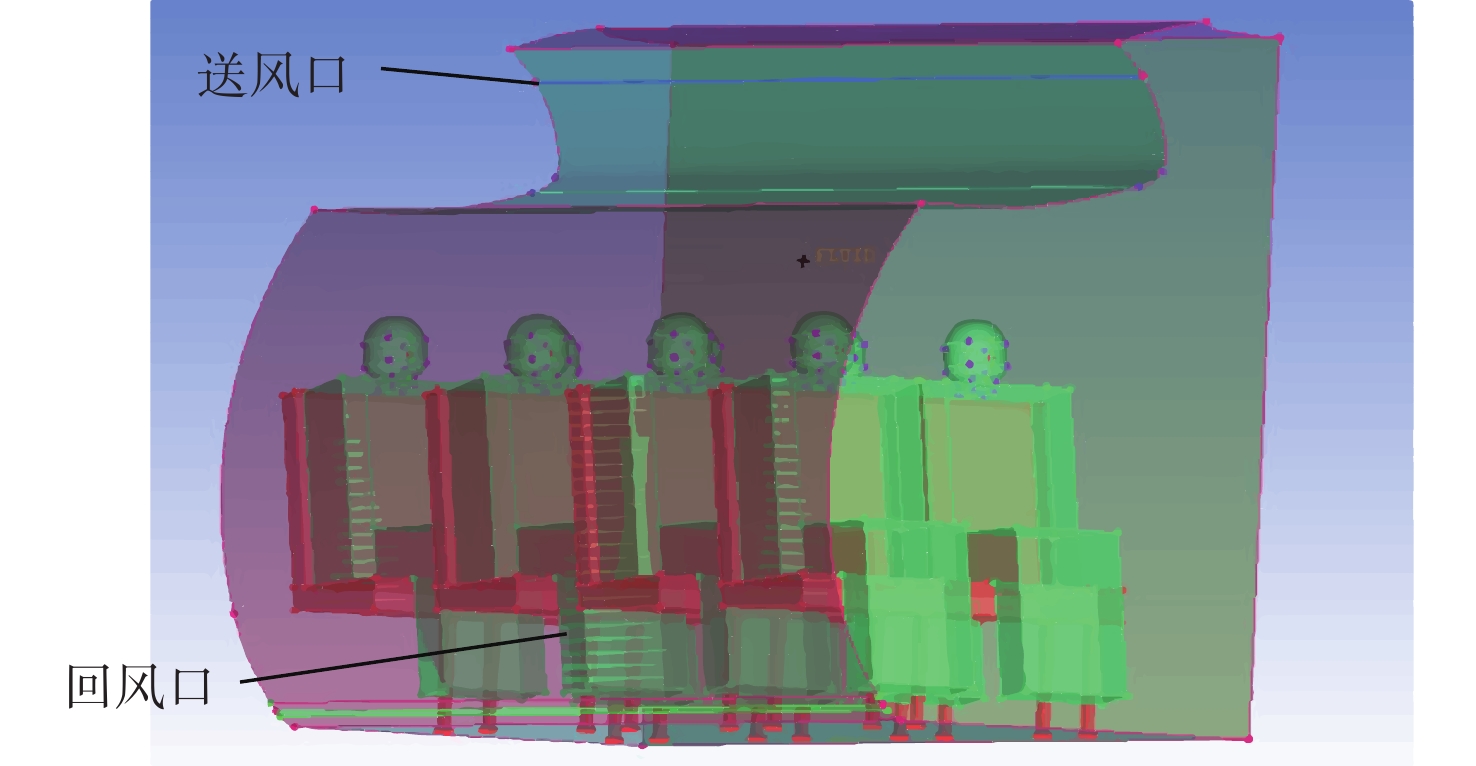
 下载:
下载:
